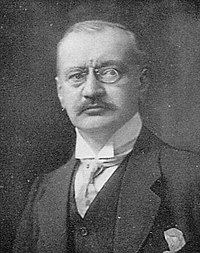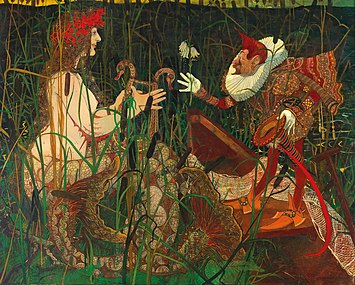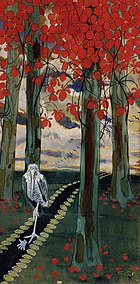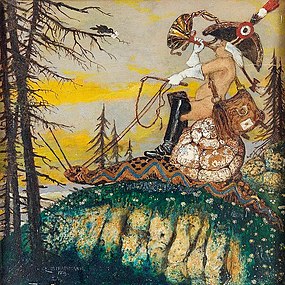| This article needs additional citations for verification. Please help improve this article by adding citations to reliable sources. Unsourced material may be challenged and removed. Find sources: "Carl Strathmann" – news · newspapers · books · scholar · JSTOR (July 2022) (Learn how and when to remove this message) |

Carl Strathmann (11 September 1866, Düsseldorf - 29 July 1939, Munich) was a German painter in the Art Nouveau and Symbolist styles.
Biography
His father, also named Carl Strathmann, was a merchant and manufacturer, who later served as consul in Chile. His mother, Alice, was originally from Huddersfield, England, and was an art enthusiast. From 1882 to 1886, he studied at the Kunstakademie Düsseldorf, with Hugo Crola, Heinrich Lauenstein and Adolf Schill. After being dismissed for a "lack of talent", he enrolled at the Grand-Ducal Saxon Art School, Weimar where, from 1888 to 1889, he studied in the master class taught by Leopold von Kalckreuth.
When Kalckreuth left, he did as well; moving to Munich, where he lived a Bohemian lifestyle as a free-lance artist, and met the painter Lovis Corinth, who became a lifelong friend and associate. In 1894, he painted one of his best known works: "Salammbô", inspired by a novel of the same name by Gustave Flaubert. In this monumental painting (6x9 feet) Salammbô, a high priestess of the Carthaginians, is shown caressing a snake, as part of a ritual sacrifice. Many were horrified, calling it a "sadistic fantasy". The scandal made him immediately famous.
Around 1900, he shared a studio with Alexander von Salzmann [de] and Adelbert Niemeyer, and gained a reputation as a caricaturist, when a portfolio of his drawings was published by Edgar Hanfstaengl. This resulted in work for several periodicals, including Pan, the Fliegende Blätter, Jugend and Simplicissimus. He also created patterns for wallpaper, menu cards, bookmarks, postcards and posters.
He was a member of the artists' association, Allotria [de] and, briefly, the Munich Secession, but left after some unspecified disputes. In 1904, together with René Reinicke, Hans Beat Wieland, Rudolf Köselitz, Wilhelm Jakob Hertling, and several others, he co-founded the Munich Watercolorists' Association. He exhibited with the Deutscher Künstlerbund and the Berlin Secession, which held a major showing of his work in 1917.
His death came in 1939, at the age of seventy-two. A major retrospective of his work was held at the Münchner Stadtmuseum in 2019.
Selected works
References
- ^ Walter Rothes: "Carl Strathmann", In: Die Kunst für Alle,, University of Heidelberg, Vol.29, 1920, pg.505 f. (Online)
- "Liebkosung der Schlange" (Caressing of the Snake) @ the Landschaftsverband Westfalen-Lippe
Further reading
- Lovis Corinth: Carl Strathmann. In: Kunst und Künstler. Vol.1/1902, S. 255 ff. (Online)
- Ismar Lachmann: "Karl Strathmann – München", In: Deutsche Kunst und Dekoration: illustrierte Monatshefte für moderne Malerei, Plastik, Architektur, Wohnungskunst und künstlerische Frauen-Arbeiten. Koch, Stuttgart 1917, Vol.40, pp.296–299, ISSN 2195-6308 (Online)
- "Carl Strathmann", In: Lovis Corinth: Legenden aus dem Künstlerleben. 2nd ed., Bruno Cassirer, Berlin 1918, pp.68–82 (Online).
- Joachim Heusinger von Waldegg: Grotesker Jugendstil: Carl Strathmann 1866–1939: Gemälde, Aquarelle, Zeichnungen, Druckgraphik. Rheinisches Landesmuseum Bonn, R. Habelt, 1976, ISBN 3-7927-0271-1
External links
- More works by Strathmann @ ArtNet
- "Jugendstil skurril. Carl Strathmann" (exhibition) @ the Münchner Stadtmuseum




